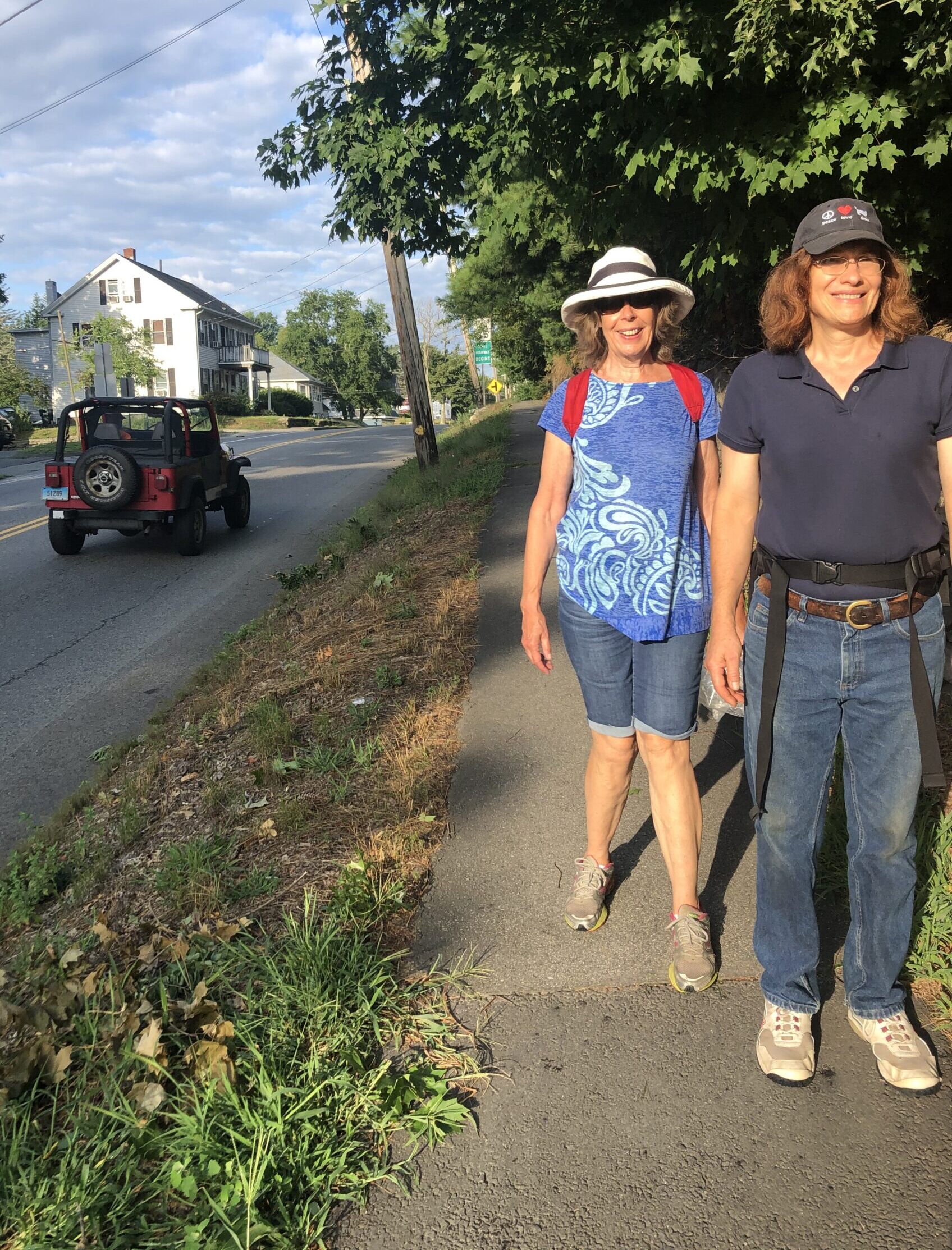A people without the knowledge of their past history, origin and culture is like a vtrree without roots.
-Marcus Garvey
Dudley, Massachusetts, is a town of 11,390 souls that lies close to Webster. It was officially incorporated in 1732 and was named after its landowners. In April, 1776, George Washington and the Continental Army camped there. They were on their way to New York City after the successful Siege of Boston that resulted in the decampment of the British to New York. There is, reportedly, a large stash of British weaponry that was hidden there and never found. Dudley is only a few miles north of the Connecticut border. Our destination is The First Congregational Church of Dudley, about 11 miles away.
We start our trek at around 6:30 AM and the temperature is a temperate 68 degrees. The sun is about two fingers above the horizon, shadows are long and there’s a light breeze. Waldo, after having to sit in the car for an hour or so, is eager to get going and tugs at the far end of the leash out front. Our route takes us through the eastern part of the town of Sturbridge, but, after a short distance, we’re able to veer off the main drags onto small side streets. At this time of the morning, the traffic is light and not many people are out and about.
Two or three miles down the road and we’re in Southbridge. The original village was called Honest Town, but in 1816, it was incorporated as the township of Southbridge. Water from the Quinebaug River provided power for sawmills and gristmills in the eighteenth century and textile mills in the nineteenth century. By the 1930s, Irish, French Canadians, Poles, Greeks, Italians and others came to work and live there. The place has a long history of manufacturing optical products and it has the unofficial title of “Eye of the Commonwealth.” The American Optical Company was at one time the world’s largest manufacturer of ophthalmologic products. They made the Norden bombsight and even did some work on the atomic bomb during World War II. The company shut down in 1984. The population today is 16,878 and now includes Puerto Ricans, Laotians and Vietnamese. All this history gives the town a quaint old New England town atmosphere. It certainly has seen a lot of history flow down its streets.
Our route takes us into forested areas embracing occasional patches of meadowland and rustic old barns. The pastureland is well cared for and it appears the hay has all been recently mowed and collected. Unlike what we saw further west, there’s no sign of putting up hay, so we don’t know if it was packed into square bails or rolled into round bails. We do come across a few silos, but there is no sign of any stacked hay. Maybe that’s just a thing out west, not here in New England.
We trek along, putting one foot in front of the other, and, as the day warms up, we sweat – a lot. Waldo’s tongue goes further and further out from his snoot and is soon flopping around like a wet, dripping flat noodle. I give him all the water he wants and let him lay down and rest in the shade when the mood strikes him. He’s not as curious as he is on the Marlborough Rail-Trail and just trots along out front, nose pointed down the road in the direction of our destination. It’s as if he, like me, has committed himself to this journey and is intent on seeing it through. Besides the Waldo stops, we also stop every couple of miles and rest our human buns on conveniently sized boulders placed by some humane person in the shade along the road. Then we’re up, heads bent against the growing heat as if we were leaning into the teeth of a storm.
Some five hours and eleven miles later, we enter the small town of Dudley. I can see, down the street, the First Congregational Church in whose parking lot we left the car. I am relieved to see the end of this leg of our journey, the longest so far, but I’m also filled with a growing sense of accomplishment. Accomplishment not just for having walked as far as we have, but to have born witness, up close and personal, to the part of the country where we live with all of its history, geography, agriculture and natural beauty.
Our next journey, only about 8.2 miles long, takes us through Webster and up over to the east side of Lake Chargoggagoggmanchauggagoggchaubunagungamaug, known locally as the lake with a name impossible to pronounce. But first, a couple of days of well earned, air-conditioned rest.
Except, of course, for Waldo’s daily 6-mile treks down the rail-trail.




Thanks for the bit of New England history.